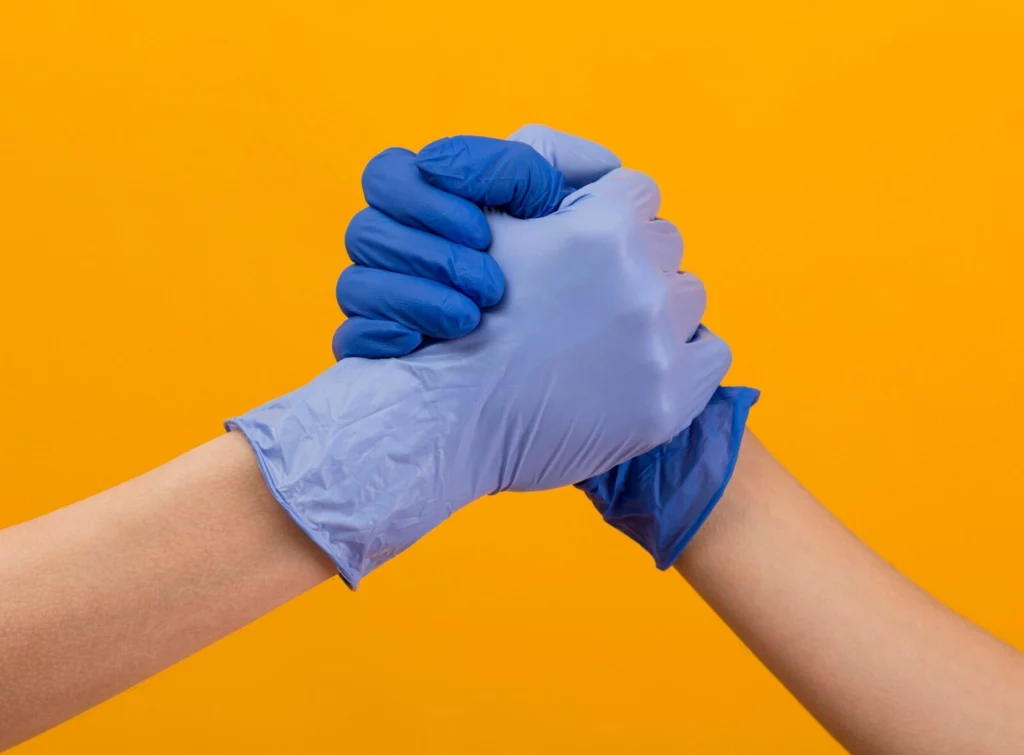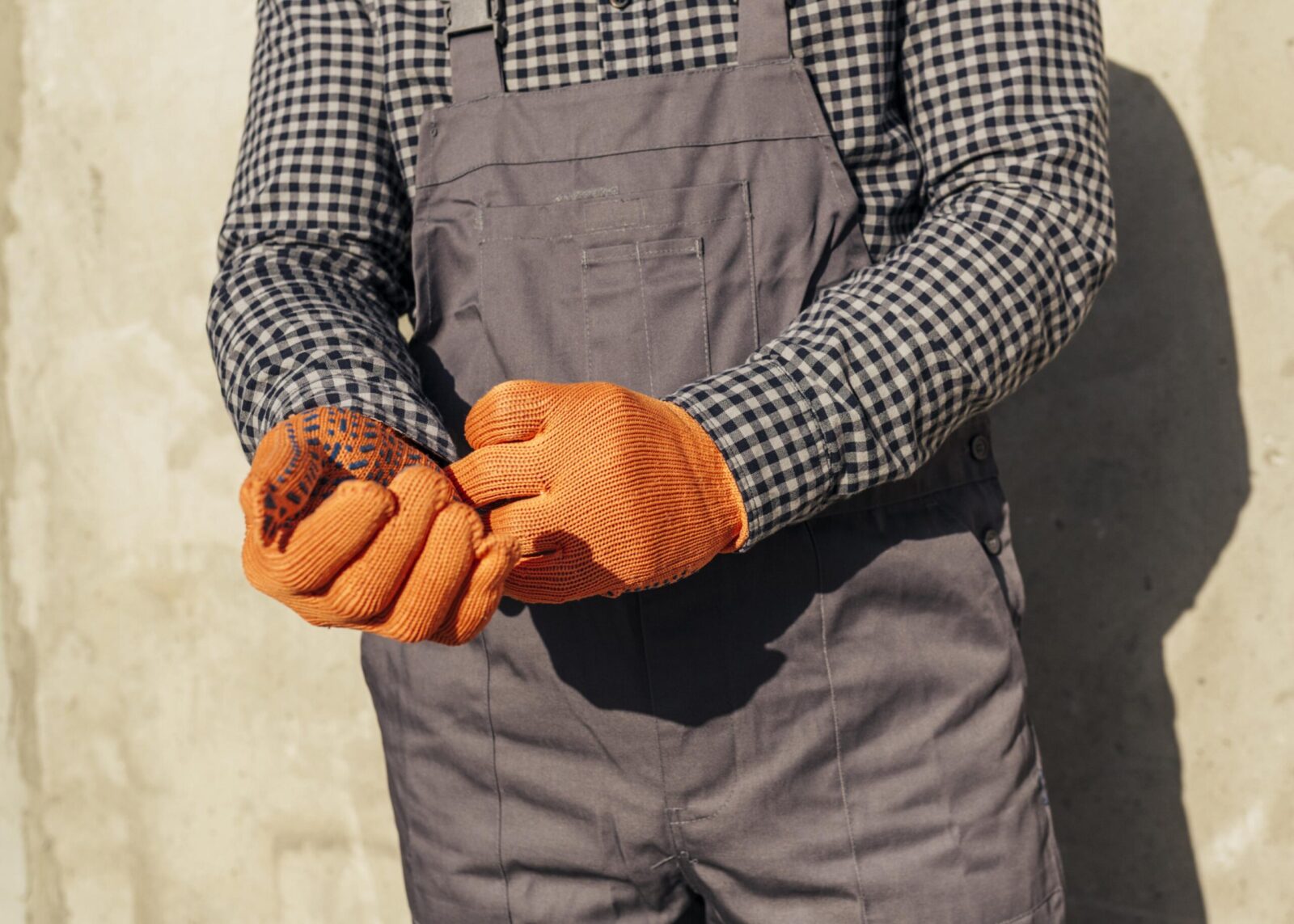
Arc Flash Gloves: Selecting the Right Protection
Choosing the right Arc Flash Gloves is key to ensuring your safety in high-risk environments like electrical maintenance or construction....

Get 20€ off on your first order!
Are you looking for reliable and affordable gloves for food handling? This guide ensures you find the best vinyl gloves to meet hygiene standards and comply with European food safety regulations. Plus, we’ll help you navigate the next step: sourcing from trusted suppliers.
Vinyl gloves, also referred to as synthetic gloves or disposable gloves, are widely used in food-related industries due to their cost-effectiveness and reliable barrier protection. To learn more about their industrial applications, visit Vinyl Gloves: The Affordable Solution for Industrial Safety.
Vinyl gloves are made from polyvinyl chloride (PVC), making them free from latex and a suitable choice for individuals with latex allergies. Their powder-free variants reduce the risk of food contamination, aligning with strict European food hygiene regulations.
To ensure the best performance and compliance, focus on the following factors when selecting vinyl gloves for food handling:
Vinyl gloves must meet European Union regulations for food safety, such as EC 1935/2004, which governs materials intended to come into contact with food. Look for certifications like the CE mark, or check that the product states compliance with EC 1935/2004 on the packaging or accompanying documentation.
Manufacturers should provide details of compliance upon request. which governs materials in contact with food. Always verify that the gloves are labeled as food-safe and certified for such use. Manufacturers often provide this information on their packaging or product descriptions.
Though vinyl gloves are less durable than nitrile gloves, they offer sufficient strength for handling non-intensive food preparation tasks. Ensure the gloves:
| Size | Hand Width (cm) | Recommendation |
| Small | 8-9 | Narrow hand profile |
| Medium | 9-10 | Average hand profile |
| Large | 10-11 | Broad hand profile |
| X-Large | 11+ | Extra broad hand profile |
For detailed sizing and comfort tips, check out How To Choose The Best Disposable Gloves – A Buyer’s Guide.
Powdered gloves are less common for food handling due to potential contamination. Opt for powder-free vinyl gloves, which are cleaner and safer for use with food.
For tasks requiring dexterity, choose thinner gloves that offer better tactile sensitivity. For example, thinner gloves are ideal for intricate tasks like garnishing desserts or slicing delicate produce, whereas thicker gloves are better suited for handling heavier food items like raw meats or kneading dense dough. However, thicker gloves provide more durability and are suitable for handling heavier food items or working with sharp utensils.

When choosing gloves, you might consider other materials, such as nitrile or chemical-resistant gloves, depending on your specific needs. Here’s a quick comparison:
| Material | Advantages | Use Cases |
| Vinyl | Cost-effective, latex-free | General food preparation |
| Nitrile | Superior durability, chemical resistance | Handling greasy or acidic foods |
| Chemical-Resistant | Protection from strong chemicals | Cleaning or sanitizing food surfaces |
Learn more about alternative gloves in How To Choose The Right Nitrile Gloves – A Buyer’s Guide.
You can explore a wide selection of vinyl gloves on Droppe’s vinyl glove product page. Vinyl gloves are a single-use product that contributes to plastic waste, so consider responsible disposal practices, such as recycling where possible, or using waste-to-energy programs to reduce their environmental impact. For related categories, consider:
We hope this guide has been insightful in helping you navigate the key considerations for selecting the best vinyl gloves for food handling, from compliance with safety standards to ensuring durability and fit. Whether you’re preparing food at home or maintaining hygiene in a commercial setting, we’re committed to supporting your needs.
Explore the comprehensive range of Vinyl Gloves on Droppe, where trusted brands and reliable products meet every safety standard. Have questions or need personalized advice? Don’t hesitate to reach out—we’re always here to help you make confident and informed choices.
For more insights, explore the main vinyl gloves article or visit our product selection page to find the perfect pair for your needs.
– The Droppe Team
Yes, as long as they are labeled as food-safe and certified according to relevant regulations, such as EC 1935/2004.
Refer to the size chart provided in this article or the manufacturer’s guide. Alternatively, a simple decision tree can help: start by assessing your primary task (e.g., intricate handling or heavy-duty work), consider the required durability and tactile sensitivity, and then select a size that provides a snug fit without restricting movement. Gloves should fit snugly without causing discomfort.
Vinyl gloves work well with most food types but may not perform optimally with extended exposure to oils or acidic substances. For such tasks, consider nitrile gloves.
Change gloves between tasks or every 4 hours of continuous use to maintain hygiene. For food businesses purchasing in bulk, consider partnering with suppliers that offer cost-effective options. If switching to nitrile or latex gloves due to specific needs, compare costs and assess long-term value to ensure budgetary alignment with food safety compliance.
Yes, you can consider nitrile gloves for durability or latex gloves if latex allergies are not a concern.
Thank you! You've signed up for our newsletter.



















Choosing the right Arc Flash Gloves is key to ensuring your safety in high-risk environments like electrical maintenance or construction....

Choosing the right Rubber Insulating Gloves is essential for safety in electrical work, but with so many options, it can...

Are you looking for the right electrical insulating gloves to ensure your safety? This guide will help you understand the...

Choosing the right Arc Flash Gloves is key to ensuring your safety in high-risk environments like electrical maintenance or construction....

Choosing the right Rubber Insulating Gloves is essential for safety in electrical work, but with so many options, it can...

Are you looking for the right electrical insulating gloves to ensure your safety? This guide will help you understand the...
Get 10€ off on your first order!
Save 30% by buying directly from brands, and get an extra 10€ off orders over €100
Save 30% by buying directly form brands, and get an extra 10€ off orders over €100